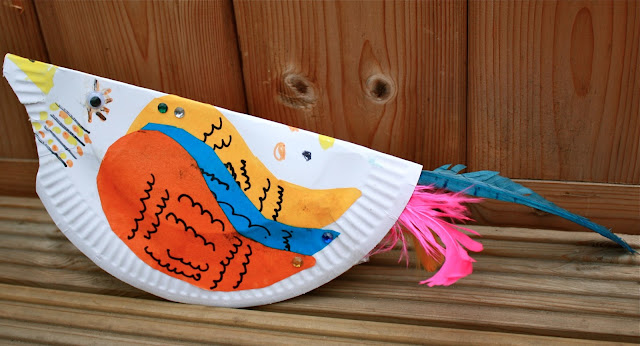Only a day late! This month the theme for Mrs Fox's Crafty Boxes is flying animals, so how could I not pick Birds & How They Live for this week's Ladybird Tuesday post. This is one of the books from my childhood Ladybird collection. Written by F E Newing, BSc and Richard Bowood and illustrated by Ronald Lampitt again this book was first published in 1966.

"Almost everyone has some interest in birds and bird life, and this is book which will give pleasure and much fascinating information to readers of all ages.
With a simple and clear text and superb colour illustrations, it describes feathers and flight, beaks and bills, feet and legs, eyes and ears, nests, songs, food and defence against enemies, and rouses enthusiasm for further study."
And that last quote just about sums it up. I'm not a 'twitcher' by any stretch of the imagination but I loved natural history as a child, wanted to grow up to be a vet for a long time, and this book was a fantastic way to learn about birds.
The inside cover, as with many of these natural history books, is illustrations with line drawings of bird's skeletons, feather and wing structure.
Starting with a page on the definition of a bird and their evolution, the book defines first feathers, then wings and tails and then flight.
And this is what I love about Ladybird books. As the books readers are children the explanation of how birds fly is in simple scientific terms, as follows;
"...in level flight the flow of air over and under the wing surfaces, and the angle at which the wing is tilted, cause a lower pressure to exist above the wing than under it. This gives what is 'lift', which balances the weight of the bird."The explanation is clear, the language is precise and there has been no attempt to "dumb-down". The child that reads this explanation of flight is expected to try and understand this level of language and scientific thought. As a result he or she will come away with a clear understanding of flight, and how birds manage to defy gravity.
In Ronald Lampitt's illustrations there is great detail and information for the young ornithologist and for the young artist examples of skillfully drawn, beautiful images. I remember drawing copies of the bird heads below as a child.
This book taught me so much and I am really happy to share it as part of the Ladybird Tuesday linky started on the Being Mrs C blog, take a look at her posts here.
The rest of Mrs Fox's Ladybird Tuesday posts are here and if you have a collection of Ladybird books, please do feel free to join in.



































































